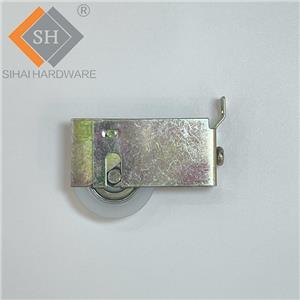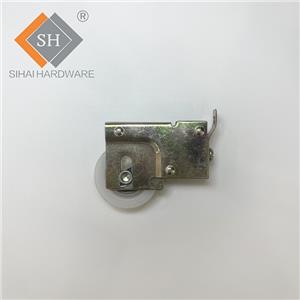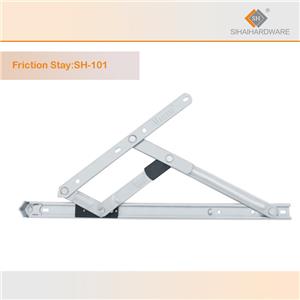TECH ARTICLE NO.46|Future Trends and Innovations in Stainless Steel Friction Stay Hinges
TECH ARTICLE NO.46|Future Trends and Innovations in Stainless Steel Friction Stay Hinges (window hinges)
Stainless steel friction stay hinges have been a staple in the window and door industry for their durability, stability, and security. As technology continues to advance, new trends and innovations are emerging to further enhance the performance and functionality of these essential components. This article explores the future trends in stainless steel friction stay hinges (window hinges), including advancements in materials, surface treatments, design features, and the potential integration of smart technologies for remote monitoring and predictive maintenance.
1. Advancements in Materials of aluminium window accessories:
Stainless steel friction stay hinges (window hinges) have traditionally been manufactured using high-quality stainless steel alloys for their corrosion resistance and mechanical strength. However, ongoing research and development are exploring alternative materials with improved characteristics. Some of the emerging materials include:
a. High-Strength Composite Materials: Composite materials, such as carbon fiber reinforced polymers (CFRPs) or glass fiber reinforced polymers (GFRPs), offer excellent strength-to-weight ratios and corrosion resistance. These materials can reduce the weight of the hinges while maintaining structural integrity.
b. Nanostructured Materials: Nanotechnology is being utilized to develop nanostructured stainless steel alloys with enhanced mechanical properties. These materials exhibit improved strength, wear resistance, and corrosion resistance, providing longer service life and better performance.
2. Advanced Surface Treatments:
Surface treatments play a crucial role in enhancing the corrosion resistance and durability of stainless steel friction stay hinges (window hinges). Future trends in surface treatments include:
a. PVD and DLC Coatings: Physical vapor deposition (PVD) coatings, such as titanium nitride (TiN) or diamond-like carbon (DLC), provide superior hardness, low friction, and excellent wear resistance. These coatings can reduce friction and increase the lifespan of the hinges.
b. Self-Healing Coatings: Researchers are exploring self-healing coatings for stainless steel friction stay hinges (window hinges). These coatings have the ability to repair minor scratches or surface damage, thereby extending the lifespan and maintaining the performance of the hinges over time.
3. Innovative Design Features:
Design advancements are focused on improving the functionality, ease of installation, and overall performance of stainless steel friction stay hinges (window hinges). Some notable design trends include:
a. Multi-Directional Hinges: Hinges that can operate in multiple directions, providing increased flexibility in window and door configurations. These hinges allow for enhanced ventilation options and improved user experience.
b. Adjustable Friction Mechanisms: Friction stay hinges (window hinges) with adjustable mechanisms that allow users to customize the level of resistance when opening and closing windows and doors. This feature provides greater control and convenience.
4. Integration of Smart Technologies:
The integration of smart technologies opens up new possibilities for stainless steel friction stay hinges (window hinges). Potential advancements include:
a. Remote Monitoring: Smart sensors embedded in the hinges can monitor parameters such as temperature, humidity, and usage patterns. This data can be transmitted to a central system for real-time monitoring, enabling proactive maintenance and identifying potential issues before they escalate.
b. Predictive Maintenance: By analyzing the data collected from smart sensors, predictive maintenance algorithms can be employed to predict potential failures or maintenance requirements. This facilitates timely interventions and minimizes downtime.
c. Automation and Integration: Smart hinges can be integrated into larger home automation systems, allowing for automated operation, remote control, and integration with other security or energy management systems.
The future of stainless steel friction stay hinges (window hinges) holds exciting possibilities with advancements in materials, surface treatments, design features, and the integration of smart technologies. These innovations aim to enhance the performance, durability, and functionality of hinges, providing improved user experiences, increased security, and more efficient maintenance. As these trends continue to evolve, it is essential for industry professionals to stay informed and embrace these advancements to meet the demands of the evolving market.




